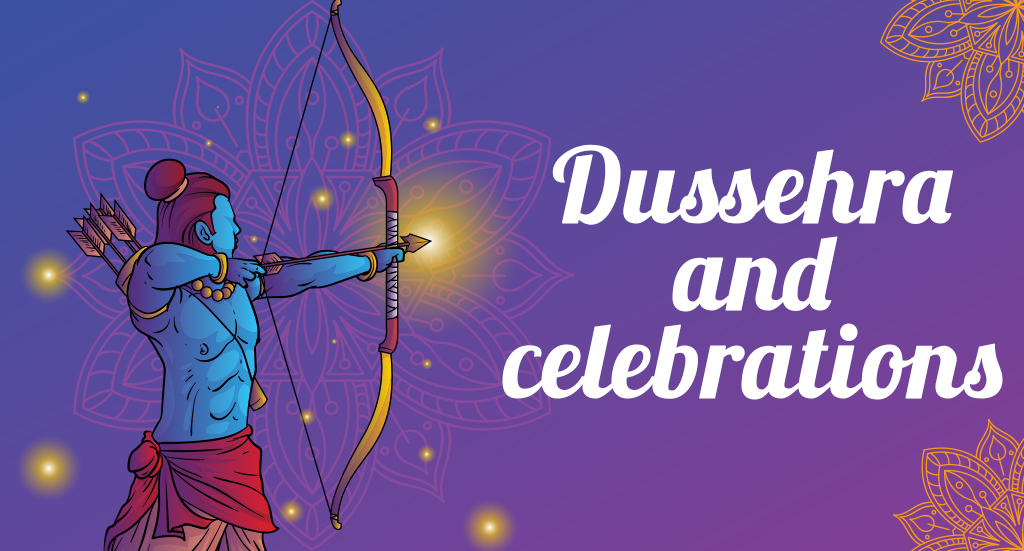Dussehra, a Hindu festival, is celebrated over 10 days and 9 nights. It marks the victory of goodness over unholy power such as the victory of Rama over Ravana and similarly victory of Durga over Mahishasura. Dussehra is an important festival celebrated by the Hindus.
Navratri is celebrated in the month of Ashvin, on the tenth day, which also marks the end of the festivities. The festival celebrates the victory of Lord Rama over Ravana, which symbolises good over evil.
It is known that in a battle, the good always triumphs. Dussehra is celebrated in various parts of India, in various forms, big or small. A large statue of Ravana is one of the biggest attractions at a fair, which is burnt down. “Jai Shree Ram” are the 3 words, sings in chorus by the crowd.
The festival of Dussehra is also known as Vijayadashmi and celebrated with great enthusiasm and joy by the Hindus, all over India. It is one of the most important religious festivals in India. According to the most famous Hindu scripture, the Ramayana, and historical beliefs, Lord Rama had performed a Chandi-puja.
Religious people and enthusiasts fast the whole day. Some people keep fast only the first and the last day (9th day), however, some people keep fast for all nine days and worship Goddess Durga to get her blessings and strength. On the tenth day, people celebrate Dussehra in the happiness of victory of Lord Rama over the demon king, Ravana. This auspicious festival of Dussehra falls in the last week of September or October, every year, two weeks before the festival of Diwali.
Ravana was a demon King, with ten heads, of Sri Lanka. He had kidnapped Lord Rama’s wife, Sita to take revenge of his sister, Suparnakha. Lord Rama killed Ravana and brought Sita back home. This is how Dussehra is celebrated every year. Dussehra holds importance in the Hindu religion. This festival signifies the victory of goodness over badness, triumph of truth over bad powers of Ravana.
There are different traditions and customs of celebrating Dussehra festival in different regions of the country. At many places, it is celebrated for a whole ten days. Somewhere priests of the temple recite stories and mantras from the Ramayana in front of the big crowd of the devotees. A large Ram Lila fair is held for several days or a month, in some parts of the world.








